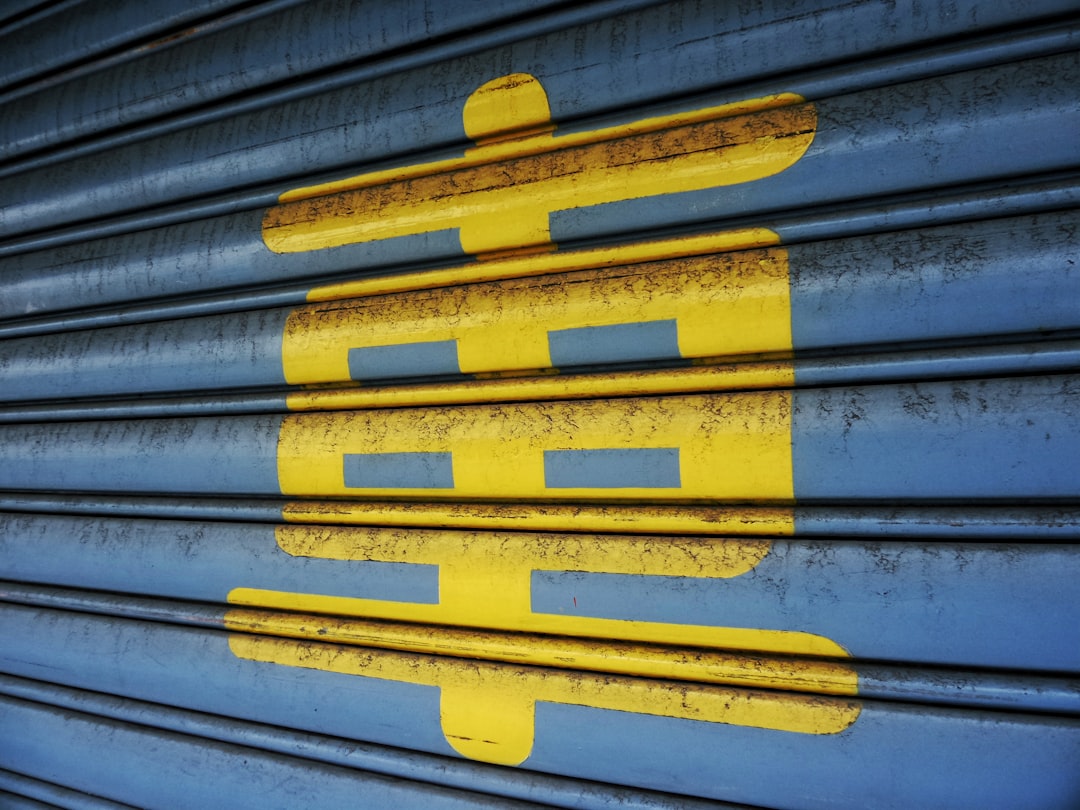

Engage prospects with a scan and streamline customer engagement with FREE QR code marketing tools by Sona – no strings attached!
Create a Free QR CodeFree consultation

No commitment

Engage prospects with a scan and streamline customer engagement with FREE QR code marketing tools by Sona – no strings attached!
Create a Free QR CodeFree consultation

No commitment
For carport manufacturers navigating a competitive landscape, the challenge of capturing high-intent leads and driving instant bookings has never been more pressing. Many firms discover, often too late, that high-value prospects are missed because their interactions are not effectively tracked, especially when customers show interest but never fill out an online form or submit contact details. Traditional marketing tactics like printed brochures and phone-based inquiries introduce friction, resulting in slow response times and lost opportunities as anonymous traffic slips through the cracks. For a deeper framework, see Sona’s offline attribution guide.
QR codes have emerged as a bridge between offline engagement and seamless digital action at precisely these pain points. When used strategically, these simple scannable codes can transform static marketing materials such as flyers, yard signs, and trade show displays into interactive tools that not only enable prospective buyers to instantly book consultations or request quotes, but also surface key engagement signals. This gives manufacturers visibility into otherwise anonymous traffic and ensures follow-up happens quickly, before intent fades or competitors respond first.
By embedding QR code solutions into the customer journey, carport manufacturers can offer a frictionless path to booking, enhance both tracking and qualification from offline to online, and address pervasive issues like incomplete lead data or delayed outreach. The result is accelerated sales cycles, better personalization, and a responsive customer experience that helps prevent missed opportunities and positions brands as proactive in a data-driven market. Explore Sona QR’s product overview for how scan analytics and CRM sync connect these dots.

Carport manufacturers are increasingly seeking to eliminate costly delays and missed follow-ups caused by manual processes and disconnected systems. Outdated analog workflows such as printed catalogs, generic appointment cards, and web forms that rarely surface high-value intent create barriers. Modern, QR-powered workflows step in to ensure every offline interaction is both actionable and trackable. For creative deployment ideas, see integrate QR codes.
The path to instant booking starts by simplifying the moment of interest. When a prospective buyer spots a build on a partner lot, a billboard on the highway, or a demo unit in a showroom, a QR code can remove the friction of typing a URL, saving a phone number, or waiting in a line to talk with someone. One scan can take them directly to a mobile-first booking flow that captures intent and routes it to your CRM, complete with source attribution, location, and timestamp.
By integrating scan data directly into CRM workflows, advanced platforms make it possible to surface high-fit prospects the moment they engage and automate timely follow-ups. This not only prevents leads from falling through the cracks but also ensures sales teams connect with buyers before competitors do. Platforms like Sona QR can trigger instant SMS or email confirmations, assign leads to the right rep, and update campaigns in real time based on scan performance.

Carport manufacturers face recurring frustrations when valuable offline touchpoints like print ads and showroom visits produce anonymous traffic. Leads who research models or request info in person frequently go untracked, meaning potential buyers remain unknown and unpursued. QR codes address this head-on by converting every offline interaction into a measured, digital action.
The industry is also seeing a shift toward mobile-first research and immediate action. Prospects expect to configure options, check availability, and book consultations without waiting on a return call. Automotive teams are already applying QR codes for cars to speed up research and conversion. QR codes meet that expectation by allowing instant engagement at the moment of interest, which is when conversion likelihood is highest.
When combined with CRM and marketing automation, QR engagement becomes part of a connected funnel. Each scan can trigger tailored follow-ups that reflect product interest, budget range, and location, ensuring that sales conversations start with context rather than cold discovery.

Carport manufacturers often struggle with distilling intent from generic web traffic or on-site interactions. QR codes help by pairing the right format with the right destination so that every scan converts interest into data and action. The most effective options align with your goals, whether that is instant booking, lead capture, or post-sale service.
Selecting formats that match buyer behavior across the lifecycle ensures that scans produce measurable outcomes. The following are the formats most consistently valuable in this vertical.
Strategically linking QR codes to the highest-value actions and monitoring performance ensures ongoing optimization. As your catalog shifts or regional promotions change, dynamic codes let you adapt without reprinting, which keeps your materials current and your analytics clean.

Carport manufacturers frequently overlook existing offline touchpoints where high-intent prospects make decisions but leave no digital trace. Growth stalls when engagement is not captured or qualified in real time. A structured scan strategy brings these moments into your data pipeline so you can convert more of them.
The objective is to meet buyers where they are, not where you wish they were. Think about the physical surfaces and materials that already exist in your business and channel network, then turn each into a digital entry point.
Targeting these areas helps prevent late lead capture and combats the core problem of losing sales to more responsive competitors. With dynamic codes and strong CTAs, you can test formats quickly and standardize on what converts, then roll it out across dealer networks for consistent results.
Time-sensitive engagement is a common struggle. Too often, the delay between a customer’s interest and a company’s response leads to lost sales or missed upsell opportunities. QR codes compress that gap by turning moments of curiosity into booked appointments, qualified quotes, or post-install actions that feed your CRM.
Focus on use cases that matter most to your revenue model. The examples below map naturally to common carport buyer journeys and operational workflows.
Every use case addresses the gap between offline curiosity and measurable, timely action. With each scan tied to a funnel stage, your team knows when to educate, when to quote, and when to close.
Carport companies often encounter a dead end after the first customer touch, especially when anonymous prospects never convert. Building high-value audiences is about surfacing intent as soon as it appears and adapting to each customer’s journey. QR codes make this segmentation automatic because each scan carries context. For strategic background, read Sona’s intent data guide and apply the tactics in Sona’s intent-driven retargeting playbook.
To create effective audiences, assign meaning to every code you deploy. Use destination, placement, and timing to signal what a prospect is likely to want next, then feed those segments directly into your remarketing and sales workflows.
Advanced platforms make it possible to unify scan actions, CRM profiles, and retargeting triggers. With Sona QR, each code becomes a smart entry point that enriches profiles in real time and fuels the right message at the right moment.
For carport manufacturers, integrating offline and online data remains a persistent challenge. Marketing teams often struggle with disconnected channels and missed attribution, especially across dealer networks, events, and outdoor advertising. QR codes unify these touchpoints, creating a single path from first engagement to final sale. As background, see this overview of emerging marketing tech. For sector-specific guidance, review Sona QR’s automotive industry guide.
When each physical asset becomes a trackable digital entry point, you can measure what matters, spend where it works, and stop guessing about offline ROI. The result is a connected customer experience that supports decisions with data.
Technology now allows teams to analyze this data holistically, closing the loop on segmentation, targeting, and campaign ROI that previously suffered from siloed efforts. With a centralized platform like Sona QR, you can manage codes at scale, monitor performance, and sync scan data with your CRM and ad platforms.
The strongest QR initiatives start with a clear use case and end with a repeatable measurement process. Treat campaigns as iterative, with testing and optimization built in. This approach ensures that scan data informs each next step and that your materials remain relevant as product lines shift.
Use the steps below to design, deploy, and scale QR campaigns that drive instant booking and measurable revenue impact. Tailor each step to the places where your team historically sees drop-offs, such as home expos and partner lots.
Start by defining exactly what you want the scan to accomplish. For carport manufacturers, top goals include instant consultation booking after a showroom visit, quote requests from direct mail, and warranty activation post-install. Align the QR destination with the action that delivers value to both the buyer and your pipeline.
Choose between static and dynamic codes based on your need for flexibility and analytics. Static codes point to a fixed destination and are best for evergreen content. Dynamic codes let you edit the destination and capture detailed scan data, which is essential for optimization and attribution.
Great design drives scans. Codes must be visible, supported by compelling CTAs, and easy to scan in real-world conditions. Treat the QR and its frame as a micro-ad that answers the value question in a few words.
Roll out codes where they will encounter the highest-intent audiences. Prioritize placements that historically suffer from late or incomplete follow-up such as event booths or partner lots.
Measurement turns scans into revenue. Collect granular data and feed it into your CRM and analytics tools. Use insights to refine creatives, placements, and follow-up timing.
Lack of granular visibility has limited manufacturers’ ability to connect offline outreach with actual sales outcomes. Advanced tracking and analytics address several points of friction by tying scans to engagement, pipeline movement, and revenue. The key is to follow the data from the first scan to the booked appointment and through to closed deals. For modeling choices, compare multi-touch attribution approaches.
With the right stack, you can prove which yard sign, brochure, or expo demo actually drove bookings, then use that insight to scale what works. This level of precision improves budgeting, reduces wasted spend, and gives sales teams the confidence to invest in the highest-return channels.
With Sona QR and Sona.com, you can go beyond counting scans. Track every scan event, measure engagement by context, respond in real time with automated workflows, and sync activity to HubSpot or Salesforce. Sona’s account identification connects anonymous scans to known buyers through identity resolution and multi-touch attribution, then unifies fragmented touchpoints across buying stages for a complete view from first scan to purchase.
Scaling QR success comes down to consistency, clarity, and automation. When every asset uses unique, trackable codes and every scan triggers a relevant follow-up, you create a compounding effect on conversions. The tips below focus on the physical media and workflows most common in carport manufacturing.
Training teams across dealers and installers also matters. A QR initiative is only as strong as the people who promote it on the ground, so make it easy for staff to understand the value and for customers to know what they get when they scan.
Modern platforms like Sona QR make it possible to tie all of these actions together. Start creating QR codes for free at Sona QR, then scale confidently as you see which use cases deliver the strongest returns.

Common industry setbacks like slow response at trade shows or anonymous foot traffic in showrooms can be resolved with thoughtful QR implementation. The following scenarios illustrate how manufacturers are turning physical attention into measurable outcomes with speed and precision.
Use these ideas as starting points, then localize them to your product mix, regions, and partner network. The best results come from testing variations of the same idea until you find the combination that resonates with your buyers.
These examples demonstrate how overcoming data and timing challenges leads to meaningful sales and customer engagement gains. By capturing intent at the source and responding immediately, manufacturers protect pipeline and grow faster.
Even strong QR programs can stumble if the basics are overlooked. Poor visibility, unclear value propositions, and inconsistent staff promotion will suppress scan rates and skew your data. Addressing these fundamentals early prevents costly underperformance.
A disciplined approach also includes regular audits of destinations and CTAs. As product lines, financing options, and regional promotions change, your QR experiences must keep pace, especially when print assets remain in market.
Leading manufacturers are rapidly shifting toward digital-first, mobile-enabled processes to prevent slow, fragmented lead capture and response. Adopting QR-driven workflows is a strategic necessity in a market where timing and data depth decide who wins the deal.
QR codes offer carport manufacturers a practical way to address well-known pain points like lost leads, slow response, and fragmented data. Every flyer, product demo, or customer event can become an entry point to a measured, automated sales journey. With dynamic destinations and real-time tracking, you ensure that high-intent contact is never missed and every engagement is captured.
The core value is immediate engagement, connected journey tracking, and actionable insight at every step. By embedding instant booking and engagement opportunities throughout the physical and digital journey, manufacturers close the gap between offline interest and measurable sales action. Over time, this creates a compounding advantage in speed to lead, personalization, and channel ROI.
If you are ready to operationalize this approach, start by choosing one high-impact use case such as showroom booking, then expand to direct mail and post-install warranty activation. Use a platform like Sona QR to generate dynamic codes, capture granular analytics, and sync scan activity with your CRM. This connected foundation will help you convert more demand at the source and build a durable, data-driven growth engine.
QR codes have transformed carport manufacturers from traditional sales approaches into dynamic, measurable growth drivers. Whether it’s accelerating customer acquisition, simplifying instant booking for custom carport designs, or enhancing the overall buying experience, QR codes replace cumbersome processes with seamless, mobile-friendly interactions that capture real-time engagement data—turning every brochure, showroom display, or advertisement into a powerful conversion tool.
Imagine knowing exactly which marketing materials prompt instant bookings and design consultations, and being able to optimize your campaigns on the fly. With Sona QR, you can create dynamic, trackable QR codes in seconds, update your campaigns without costly reprints, and link every scan directly to revenue. No missed leads, no guesswork—just smarter, faster growth for your carport business.
Start for free with Sona QR today and transform every scan into a confirmed booking, a new customer, or a closed deal.
Carport manufacturers often miss high-value prospects because offline interactions are not effectively tracked, and traditional marketing methods introduce friction and slow response times leading to lost opportunities.
QR codes transform offline marketing materials into interactive tools that enable instant booking, capture key engagement signals, provide visibility into anonymous traffic, and allow quick follow-up before intent fades.
Effective placements include showrooms, yard signs, billboards, trade shows, brochures, product labels, and direct mail where they capture leads at moments of high intent.
Common formats include web links for booking or configurators, vCards for saving contact info, pre-filled forms for quotes, dynamic codes for real-time updates, and SMS or email initiation for direct communication.
Dynamic QR codes allow real-time updates to destinations without reprinting materials and provide detailed scan analytics essential for tracking, retargeting, and optimizing campaigns.
They should define clear use cases, choose suitable QR code types, design and test codes for visibility and ease of scanning, deploy across high-intent channels, and continuously track and optimize performance.
Integration enables capturing scan data with context like source and timing, automates personalized follow-ups, assigns leads to reps quickly, and helps prevent missed opportunities by responding faster than competitors.
Post-sale QR codes on installation stickers or documentation can drive warranty activations, support requests, referrals, and cross-sell opportunities, improving customer retention and lifetime value.
By tagging scans with intent, segmenting audiences by product or location, capturing behavioral data at scan time, and syncing this information with CRM and ad platforms to run personalized remarketing campaigns.
They should avoid poor code visibility and placement, unclear calls to action, lack of staff training to promote scanning, outdated destinations, and inconsistent tracking to ensure high scan rates and accurate data.
The article does not specify the cost to get a carport from a manufacturer.
The article does not detail the specific materials used by carport manufacturers.
The article does not explicitly discuss benefits of custom-built carports compared to standard models.
The article does not provide guidance on choosing a carport manufacturer for buyer needs.
The article does not provide information on locating top carport manufacturers by area.
Use Sona QR's trackable codes to improve customer acquisition and engagement today.
Create Your FREE Trackable QR Code in SecondsJoin results-focused teams combining Sona Platform automation with advanced Google Ads strategies to scale lead generation

Connect your existing CRM

Free Account Enrichment

No setup fees
No commitment required

Free consultation

Get a custom Google Ads roadmap for your business






Launch campaigns that generate qualified leads in 30 days or less.
